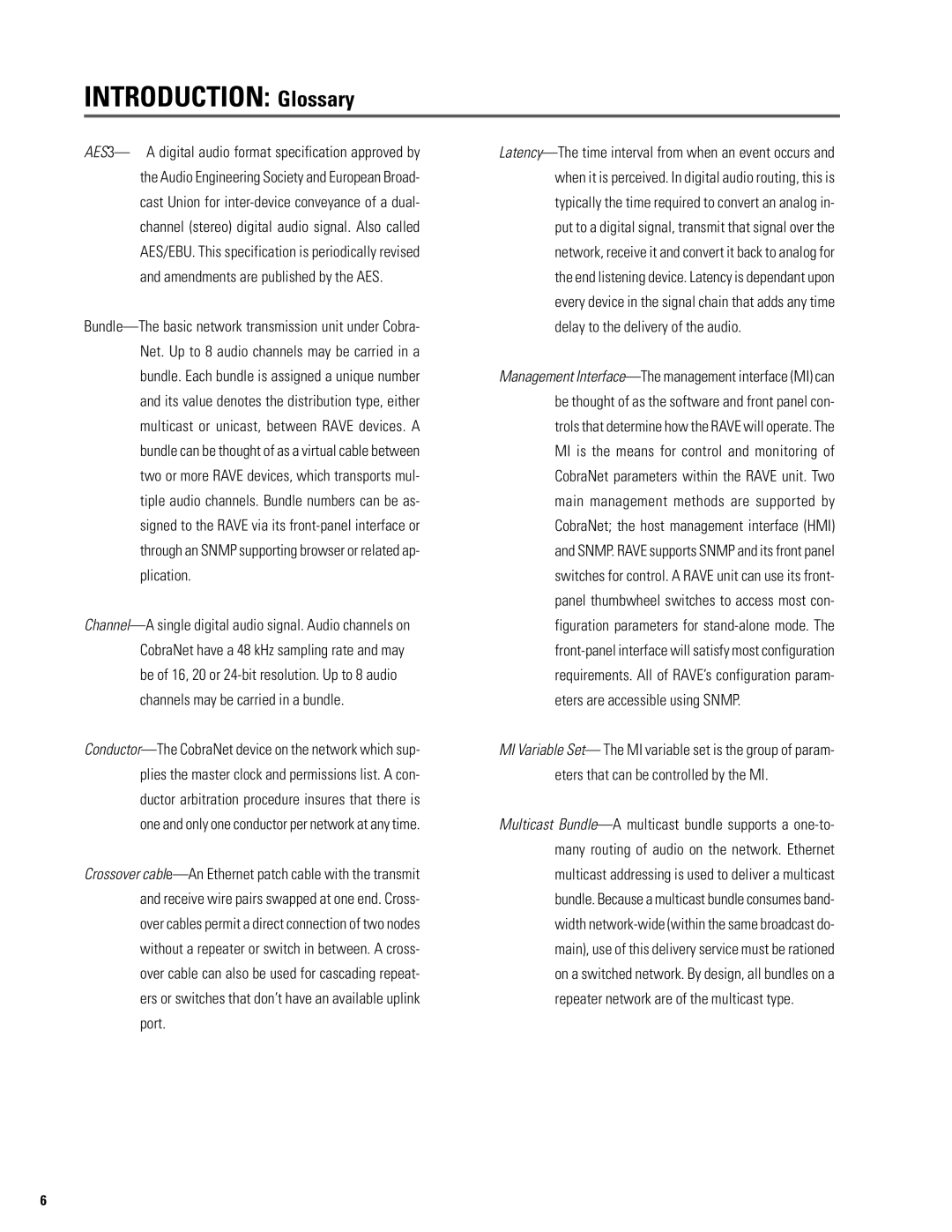AES3— A digital audio format specification approved by the Audio Engineering Society and European Broad- cast Union for inter-device conveyance of a dual- channel (stereo) digital audio signal. Also called AES/EBU. This specification is periodically revised and amendments are published by the AES.
Bundle—The basic network transmission unit under Cobra- Net. Up to 8 audio channels may be carried in a bundle. Each bundle is assigned a unique number and its value denotes the distribution type, either multicast or unicast, between RAVE devices. A bundle can be thought of as a virtual cable between two or more RAVE devices, which transports mul- tiple audio channels. Bundle numbers can be as- signed to the RAVE via its front-panel interface or through an SNMP supporting browser or related ap- plication.
Channel—A single digital audio signal. Audio channels on CobraNet have a 48 kHz sampling rate and may be of 16, 20 or 24-bit resolution. Up to 8 audio channels may be carried in a bundle.
Conductor—The CobraNet device on the network which sup- plies the master clock and permissions list. A con- ductor arbitration procedure insures that there is one and only one conductor per network at any time.
Crossover cable—An Ethernet patch cable with the transmit and receive wire pairs swapped at one end. Cross- over cables permit a direct connection of two nodes without a repeater or switch in between. A cross- over cable can also be used for cascading repeat- ers or switches that don’t have an available uplink port.
Latency—The time interval from when an event occurs and when it is perceived. In digital audio routing, this is typically the time required to convert an analog in- put to a digital signal, transmit that signal over the network, receive it and convert it back to analog for the end listening device. Latency is dependant upon every device in the signal chain that adds any time delay to the delivery of the audio.
Management Interface—The management interface (MI) can be thought of as the software and front panel con- trols that determine how the RAVE will operate. The MI is the means for control and monitoring of CobraNet parameters within the RAVE unit. Two main management methods are supported by CobraNet; the host management interface (HMI) and SNMP. RAVE supports SNMP and its front panel switches for control. A RAVE unit can use its front- panel thumbwheel switches to access most con- figuration parameters for stand-alone mode. The front-panel interface will satisfy most configuration requirements. All of RAVE’s configuration param- eters are accessible using SNMP.
MI Variable Set— The MI variable set is the group of param- eters that can be controlled by the MI.
Multicast Bundle—A multicast bundle supports a one-to- many routing of audio on the network. Ethernet multicast addressing is used to deliver a multicast bundle. Because a multicast bundle consumes band- width network-wide (within the same broadcast do- main), use of this delivery service must be rationed on a switched network. By design, all bundles on a repeater network are of the multicast type.
